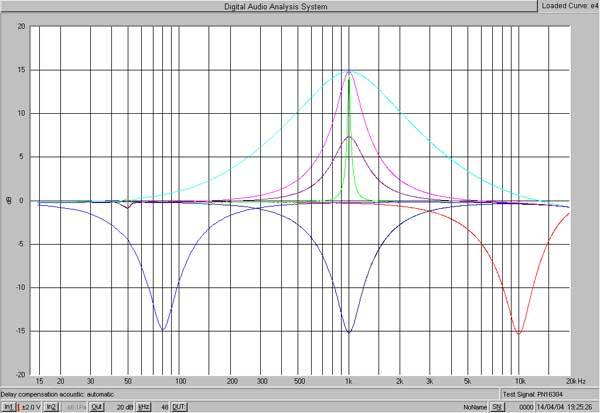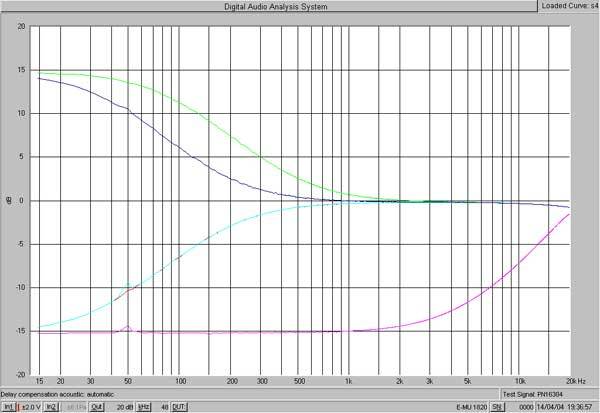Creative's E-MU 1820 Goes Home Studio Pro
Test Configuration And Audio Measurements, Continued
All the measurements were performed symmetrically (except the phono input!). The measurement frequency was 1 kHz. This would give you the maximum levels obtainable in output or acceptable for input without noticeable distortion. The results are very satisfactory, as they are for various other tests we performed. The equalizers gave the expected results and were very accurate, an essential feature in this type of corrector. We do have one small beef: the whole audio range is not always covered. Some correctors stopped at 80 Hz although there are instruments that can go much lower (let's say around 40 Hz). It would be a good thing to be able to correct them as well.
Here are a few examples of possible corrections using a parametric equalization band. These corrections are very effective but, unfortunately, the filter does not go below 80 Hz.
The "shelf" corrector is akin to a classic bass (or treble) corrector, except that the whole audio band can be scanned with the inflexion point, sometimes with surprising results. You have to know what you are doing!
The RIAA correction, achieved through the phono input, is absolutely correct. Just to nit-pick, however: it's a pity there isn't any subsonic filtering, which is now fairly common.
The phono input thus proves to be very usable, even if it is not a high-end creation offering all the options and performance of a high-end separate preamp. But that kind of equipment would be much more expensive than the whole of the E-MU 1820.
Tests using a Right Mark Audio Analyzer were performed at 44.1 kHz in 16 bit and 24 bit mode and at 48 kHz in 24 bit mode. We believe that these levels reflect the most popular methods at these sampling frequencies. We were NOT able to take measurements at 96 and 192 kHz, since the card is incompatible with the WDM drivers at these frequencies. E-MU has stated that it will address this issue.
Performances measurable at 96 and 192 kHz generally ought to be identical to those obtained at 48 kHz. Except, of course, for the frequency response, which will obviously move higher up the range. This could have a certain impact, for example on the signal/noise ratio due to the expansion of the bandwidth, but there won't be any radical changes. So nothing to worry about there.
Get Tom's Hardware's best news and in-depth reviews, straight to your inbox.
Current page: Test Configuration And Audio Measurements, Continued
Prev Page Test Configuration And Audio Measurements Next Page Behavior At 44.1 KHz/16 Bits

